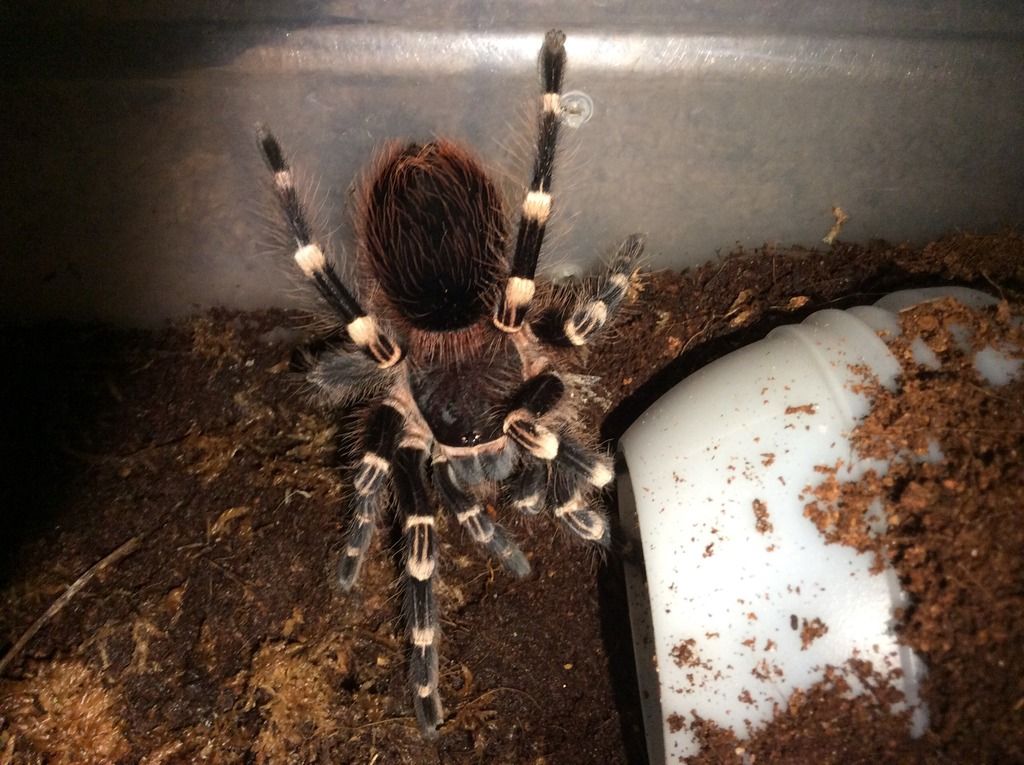Swoop
Arachnosquire
- Joined
- Sep 17, 2017
- Messages
- 94
Hi guys, new member here. As a kid I always caught spiders, mantids, all kinds of invertebrates and had a G. rosea for five or six years. Lately I thought it might be fun to get another tarantula and this forum convinced me I actually want dozens but maybe I'll start with just a few lol.
So I've done a little poking around on the forum and elsewhere and a few themes seem to come up a lot in the 'T's for beginners' discussions that I don't really get. Fast or slow growth is mentioned a lot; is this just because people equate slow with boring, or do fast and slow growers require different care (other than frequency of feeding)?
What's the distinction between a sling and a juvenile? I'd like to get small T's and watch them develop (plus less $) but not if my inexperience is going to put them at unreasonable risk. Is there a particular size for the species I'm interested in (below) where they're a 'juvenile' and no longer a sling?
I've identified several terrestrial NW species that I like and found reputable dealers with slings/juveniles for sale. Will probably get two each of A. Geniculata slings, L. Parahybana juveniles, and either B. Boehmei or M. Robustum. All except M. Robustum were mentioned at least a couple times as potential starter T's, is there anything about M. Robustum that's particularly difficult? I'm not concerned about burrowing, speed, or leg barbs as I don't intend to handle them. I found 1" M. Robustum's ($20) and 1/3" B. Boehmei's ($35) for sale so I'm kind of leaning towards the M. Robustum's due to cost and, I hope, 1" specimens being juveniles and not slings.
Thanks for any input
So I've done a little poking around on the forum and elsewhere and a few themes seem to come up a lot in the 'T's for beginners' discussions that I don't really get. Fast or slow growth is mentioned a lot; is this just because people equate slow with boring, or do fast and slow growers require different care (other than frequency of feeding)?
What's the distinction between a sling and a juvenile? I'd like to get small T's and watch them develop (plus less $) but not if my inexperience is going to put them at unreasonable risk. Is there a particular size for the species I'm interested in (below) where they're a 'juvenile' and no longer a sling?
I've identified several terrestrial NW species that I like and found reputable dealers with slings/juveniles for sale. Will probably get two each of A. Geniculata slings, L. Parahybana juveniles, and either B. Boehmei or M. Robustum. All except M. Robustum were mentioned at least a couple times as potential starter T's, is there anything about M. Robustum that's particularly difficult? I'm not concerned about burrowing, speed, or leg barbs as I don't intend to handle them. I found 1" M. Robustum's ($20) and 1/3" B. Boehmei's ($35) for sale so I'm kind of leaning towards the M. Robustum's due to cost and, I hope, 1" specimens being juveniles and not slings.
Thanks for any input




